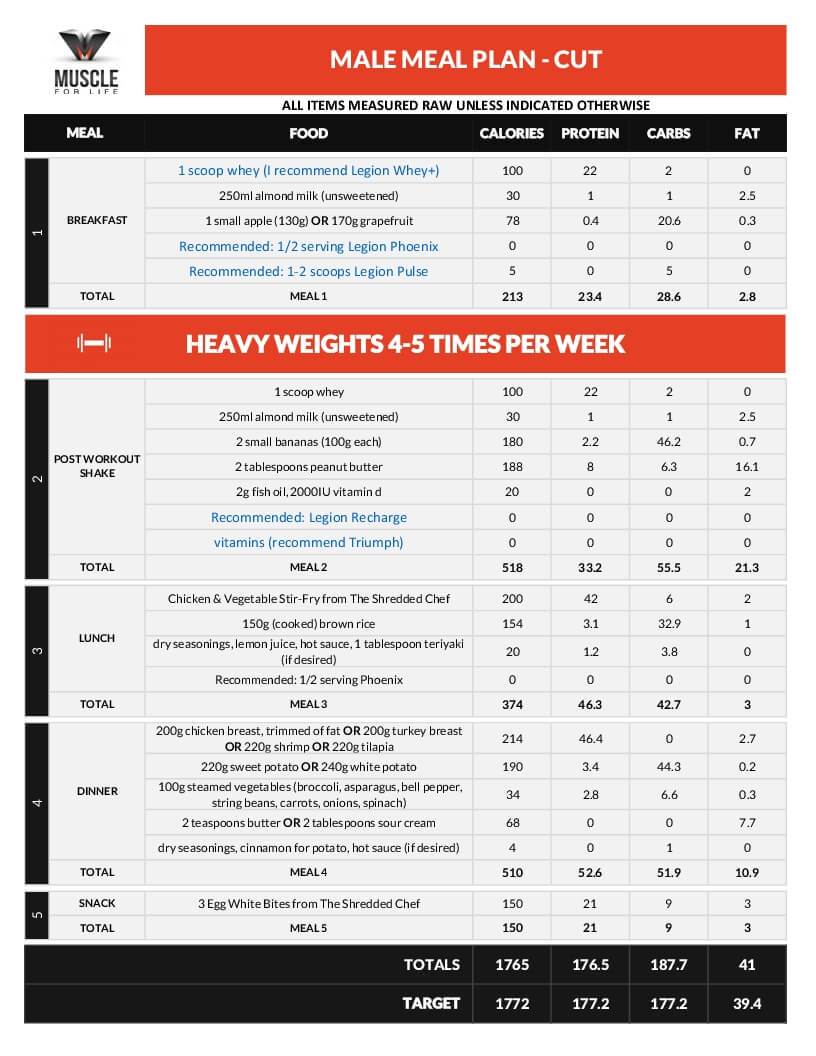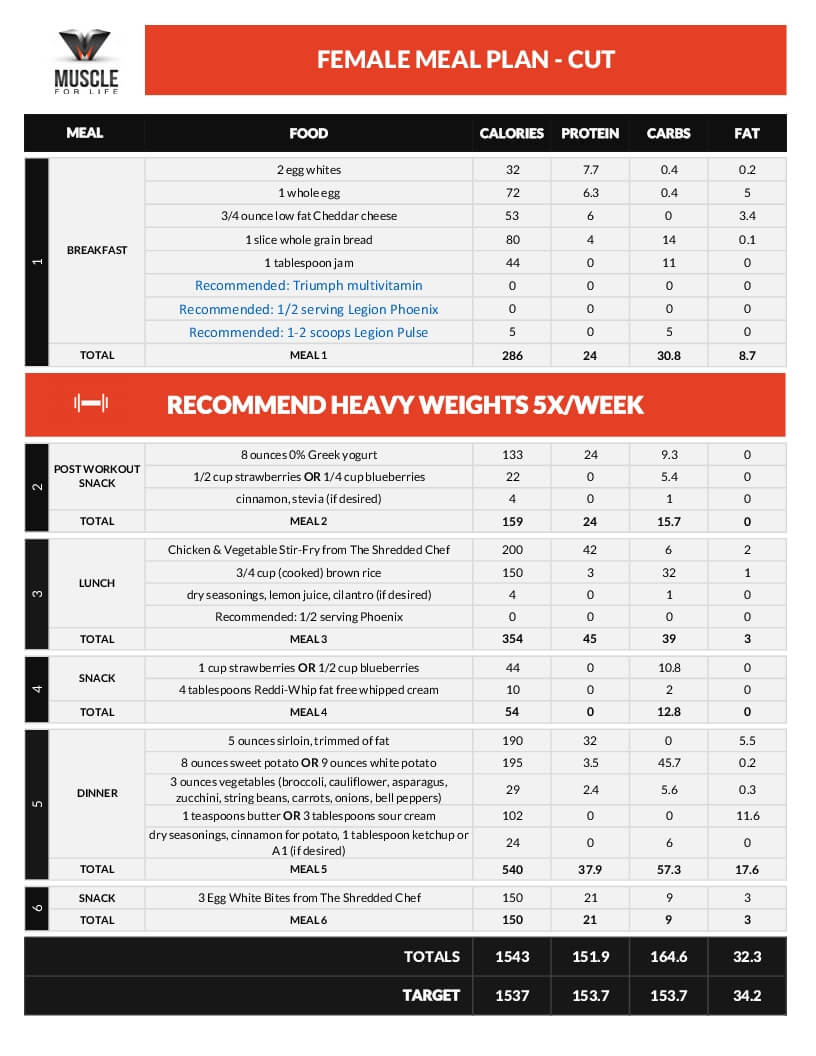I’m going to make a couple assumptions as to why you’re here.
Sure, I know you want to learn about meal planning, but I’d wager a cheat meal that you’re looking to achieve something very specific.
Namely, weight loss or muscle growth or, God willing, a little bit of both
If I’m right, this might be the most important meal planning piece you ever read.
I know I know…but seriously. That’s not hyperbole.
By the end of this article you’ll know a lot more than “how to make a meal plan.”
You’ll know how to have the body want eating the foods you love…for the rest of your life.
Imagine…
- No more fad diets.
- No more forcing down joyless, tasteless meals.
- No more battling hunger and cravings.
- No more struggling to lose or gain weight.
What if you could confidently soar above all of the mainstream diet hysteria and gimmicks?
What if you could use your diet to feel completely in control of your body composition and health?
And what if you could do it without having to follow a bunch of restrictive rules or give up everything you actually like to eat?
Well, all those things are possible. Easy, even, when you know what you’re doing.
So have I got your attention?
Good. Let’s get to work.
Related: Learn about Legion’s online fitness coaching service
(Or if you’d prefer to skip all of the meal planning mumbo jumbo, and you just want to know which diet will help you lose weight quickly, no problem! Just take the Legion Diet Quiz, and in less than a minute, you’ll know exactly what diet is right for you. Click here to check it out.)
Table of Contents
+Want to listen to more stuff like this? Check out my podcast!
6 Meal Planning Myths That Need to Die
Before we get to the main course, let’s enjoy a light aperitif and clear the decks.
If you’ve ever had trouble understanding how to create effective meal plans, then you’ve probably fallen prey to one or more of the following myths.
Fear not, intrepid dieter.
Take my hand and together we will shine the light of truth on the darkest recesses of meal planning hell.
“Clean eating is the key to getting and staying lean.”
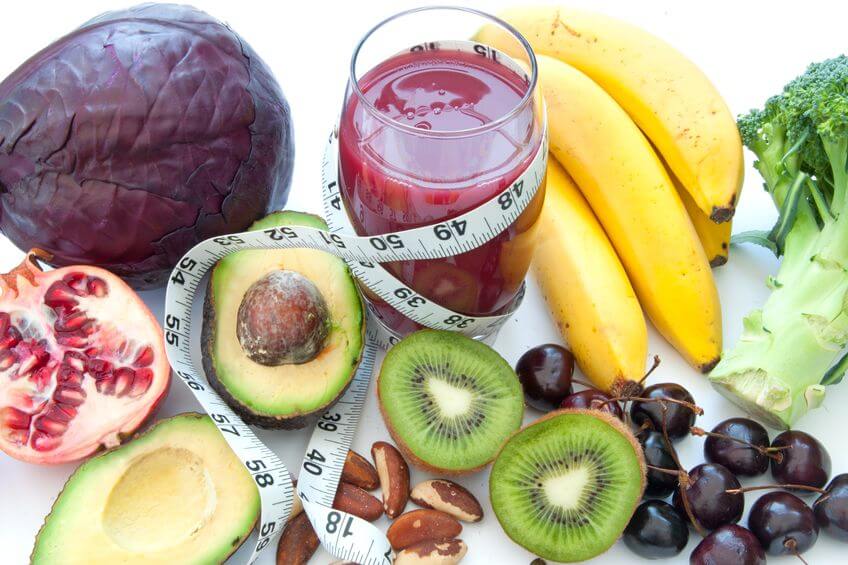
The cult of “clean eating” has won wide acceptance and, while it has its heart in the right place, it really misses the forest for the trees.
Specifically, what most “clean eaters” don’t realize is the nutritional value of food has little to do with its effects on your body composition.
Sure, eating plenty of nutritious foods is important for overall health and longevity, but there are no foods that directly cause weight loss or weight gain. Sugar isn’t your enemy and “healthy fats” aren’t your savior.
The key to understanding these “shocking” statements is understanding the concept of “energy balance,” which is the relationship between the amount of energy you eat and the amount you burn.
The “boring” physiological reality is that meaningful weight loss requires eating less energy than you expend and meaningful weight gain requires the opposite (eating more than you burn).
When you eat less energy than you burn, you’re in what’s known as a “negative energy balance” or “calorie deficit.” This results in weight loss.
And when you eat more than you burn, you’re in a “positive energy balance” or “calorie surplus.” This results in weight gain.
Thus, in this sense, a calorie is a calorie.
Eat too much of the “cleanest” foods in the world and you will gain weight. Maintain a calorie deficit while following a “gas station diet” of the most nutritionally bankrupt crap you can find and you will lose weight.
This is why Professor Mark Haub was able to lose 27 pounds on a diet of protein shakes, Twinkies, Doritos, Oreos, and Little Debbie snacks. He simply ate fewer crappy calories than his body burned and, as the first law of thermodynamics dictates, this resulted in a reduction in total fat mass.
“If you eat certain foods, you will gain weight.”

This is a natural extension of the previous myth but deserves its own treatment.
If someone tells you there are “weight gain” and “weight loss” foods, do yourself a favor and ignore everything they have to say.
Foods don’t have any special properties that cause you to gain or lose weight. They can’t “clog your hormones” or magically transform into body fat or do anything else to sabotage your fitness goals.
What foods can do, however, is provide calories and macronutrients (protein, carbohydrate, and fat), and these are the only two factors that matter when we’re talking about levels of body fat and lean mass.
That is, the total amount of energy contained in food (calories) and how that energy breaks down into protein, carbohydrate, and fat (macronutrients), determines what happens when you eat them.
We’ll dive into all the details soon, but here’s what you need to know:
- Certain foods don’t make you fat. Overeating does.
- Sugar doesn’t make you fat. Overeating does.
- Carbohydrates don’t make you fat. Overeating does.
- Hormones like insulin and cortisol don’t make you fat. Overeating does.
Controlling your weight does NOT require eating certain foods and avoiding others, combining foods in specific ways, or any other type of quackery.
As you’ll soon see, all it requires is smart manipulation of calorie and macronutrient intake.
“Low-carb dieting is the best way to lose fat.”
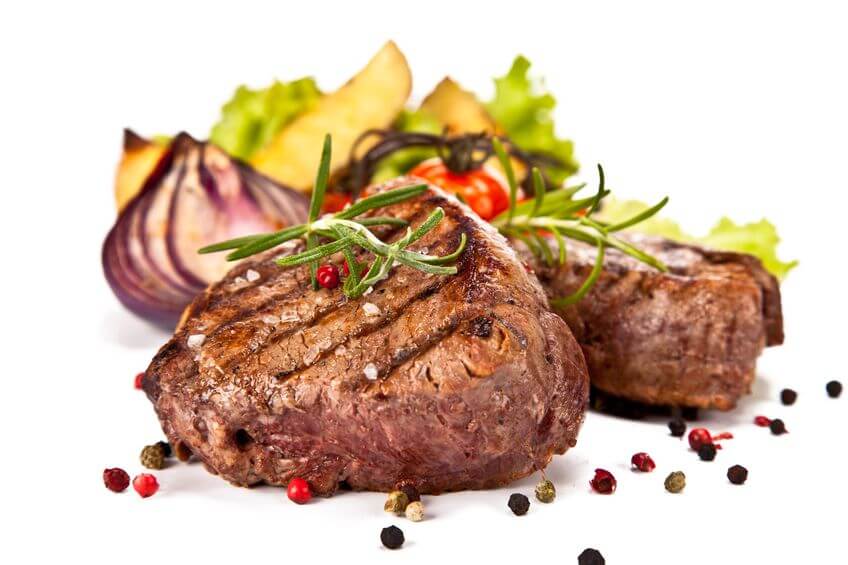
A couple decades ago, low-fat dieting was all the rage. It didn’t stop us from getting fatter and fatter.
Well, the mob has now turned its sights to a new enemy: the carbohydrate.
This is the little bastard responsible for all our waistline woes, we’re told. Banish it forever and you can live a long, lean life (dreaming about pizza and ice cream).
Well I’m delighted to give you some good news:
If you’re physically active and aren’t diabetic or pre-diabetic, you have no reason to follow a low-carb diet.
In fact, it’s much more likely that a high-carb diet is an all-around better choice for you. And yes, even when you want to lose weight.
But let’s back up for a minute.
Why Low-Carb Diet Research Is Misleading
Yes, I know that low-carb evangelists bandy about quite a few studies as irrefutable proof that low-carb dieting is better for weight loss.
It all sounds very scientific and convincing and, understandably, wins new converts every day.
There’s a big, gaping hole in the research though, and it relates to protein intake.
Namely, every single low-carb weight loss trial I’ve seen being used to sell the ideology has a major flaw: the low-carb diets contain more protein than the low-fat ones.
Yes, one for one, without fail.
This presents a serious problem because it means we’re not looking at a true apples-to-apples comparison of dieting methodologies. Instead, we’re looking at how a high-protein and low-carbohydrate diet fares against a low-protein and high-fat diet.
The former wins every time but is it because of the low-carb or high-protein element? Anti-carbers will tell you it’s the magic of low-carb eating, of course but are they right?
Well, to know that, we would need to look at weight loss trials that kept protein intake high in both the low- and high-carb groups.
And lo and behold, I know of four that meet those criteria and their findings are summarized by this from one conducted by researchers from Harvard University:
“Reduced-calorie diets result in clinically meaningful weight loss regardless of which macronutrients they emphasize.”
That is, so long as you maintain a calorie deficit, raising or lowing carbohydrate intake doesn’t significantly impact fat loss.
It’s also worth looking at a recent (and extensive) meta-analysis conducted by researchers from several universities that involved the review of 19 weight loss trials. I quote:
“Trials show weight loss in the short-term irrespective of whether the diet is low CHO [carbohydrate] or balanced. There is probably little or no difference in weight loss and changes in cardiovascular risk factors up to two years of follow-up when overweight and obese adults, with or without type 2 diabetes, are randomised to low CHO diets and isoenergetic balanced weight loss diets.”
And last but not least, I should mention that I’ve worked directly with thousands of people, helping them lose thousands of pounds collectively, and I can tell you with absolute certainty:
You can get the body of your dreams eating the carbs you love.
If you’d like to know more about low-carb dieting and how (in)effective it is for losing fat and building muscle, check out this article.
“Very-low-calorie dieting is the best way to drop pounds quickly.”
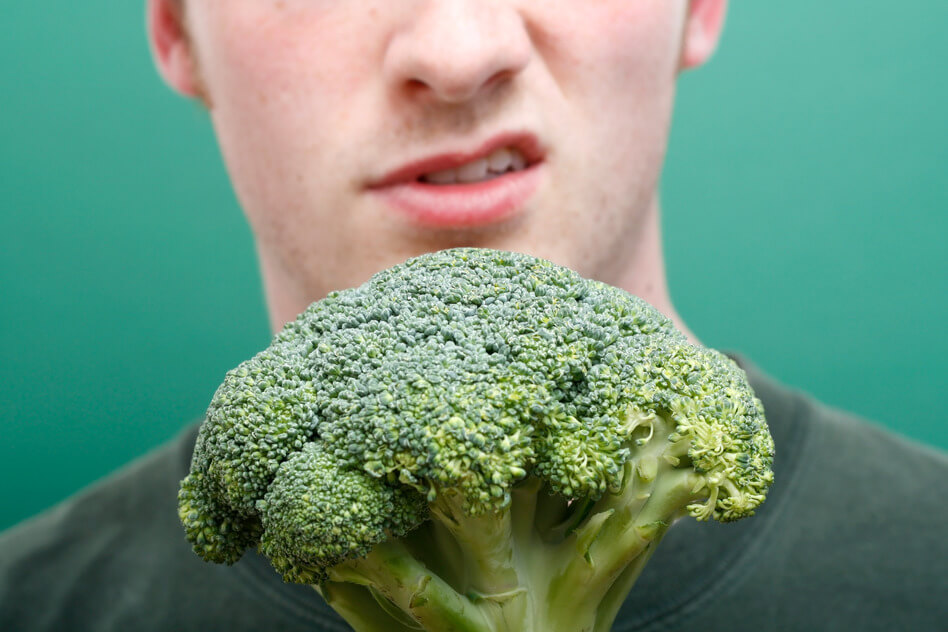
Yes, if you starve yourself, you’ll lose weight quickly.
Watching the scale go down and feeling your pants loosen is encouraging, but there’s a problem.
Losing weight quickly isn’t the goal. Instead, you want to lose fat quickly and not muscle.
In fact, preserving muscle is the number one priority when you’re dieting for fat loss because if you don’t, it’s only a matter of time until you wind up skinny fat.
There are several things you have to get right to do this, and we’ll go over them later in this article, but first and foremost is not starving yourself.
The bottom line is if you eat too little, you will lose muscle. And the more muscle you lose, the further you’re going to be from your ideal physique, regardless of how much fat you lose in the process.
(And again, if you feel confused about how many calories, how much of each macronutrient, and which foods you should eat to reach your goals, take the Legion Diet Quiz to learn exactly what diet is right for you.)
“You have to eat frequently to speed up your metabolism.”

Read some generic magazine article or blog article on losing weight and you’re likely to come across some version of this.
The idea is that by increasing meal frequency you can “stoke the metabolic fire” and accelerate fat loss.
Well, it’s true that breaking down and processing the food you eat causes a “metabolic boost.” This is known as the “thermic effect of food” and it can be quite significant (about 25% of the energy contained in carbohydrate is used to digest and process it, for example).
Theoretically, then, if you ate frequently enough you could harness the thermic effect of food and keep your metabolism revved up all day, right?
It sounds plausible but research shows it doesn’t play out like that.
A study conducted by scientists at the French National Institute of Health and Medical Research involved the analysis of scores of studies with a variety of eating patterns ranging from 1 to 17 meals per day.
Researchers found no difference in 24-hour energy expenditure between low- and high-frequency eating.
What they found instead is that small meals cause small, fleeting increases in metabolic rate and larger meals result in larger, longer-lasting boosts, and it all balances out in terms of total energy expenditure by the end of the day.
The bottom line is there is no metabolic advantage to eating 3, 6, or 9 times per day, and you should do what fits your preferences and schedule.
How Meal Planning Can Save You From “Dieting”
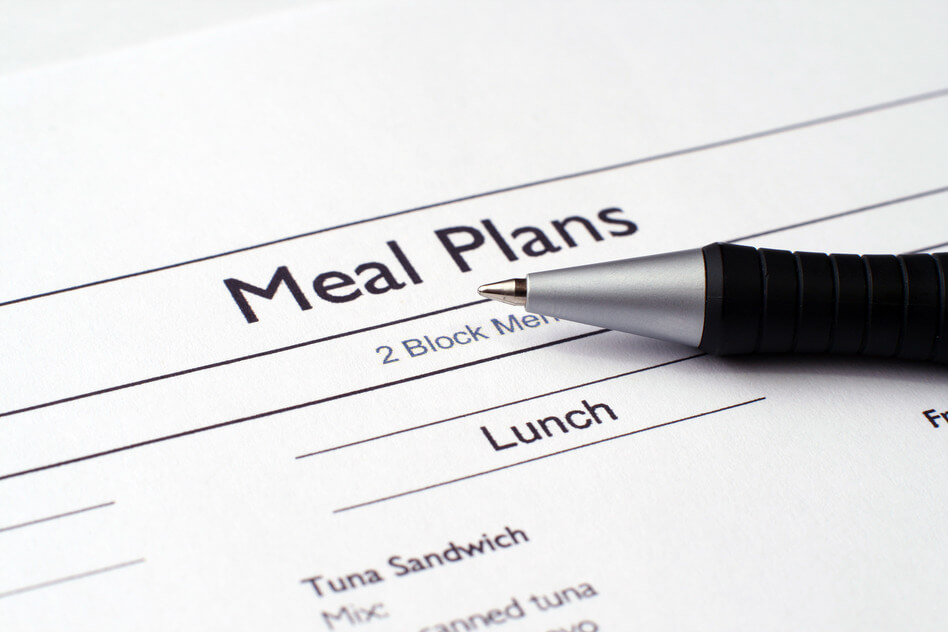
Fad diets all have one thing in common: the assertion that theirs is the One True Way.
The Paleo hordes say you must follow the calls of your ancient cave-dwelling ancestors. The anti-carbohydrate crusaders insist you subject yourself to trial by ketogenic dieting. The quacks swear by “cleanses” and “detoxes” and “biohacking” and other nonsense.
You can squander months and years wandering in this forest, defecting from one ideology to another, with nothing to really show for it in the mirror and gym. On you’ll go, though, certain that the One True Diet is out there somewhere, patiently waiting for your arrival.
Well, I have good and bad news.
The bad: there is no One True Diet. There are no real shortcuts to losing fat and building muscle.
The “secret they’re not telling you” about dieting is it’s rather boring, really. It lacks the sizzle needed to win book deals and television spots.
But there’s good news.
The truth is simple. And workable. For everyone. Every time.
Thomas Edison once said that “opportunity is missed by most people because it is dressed in overalls and looks like work.”
Dieting is like that.
Suckers want glitz and glamor but the real opportunity to build the body of your dreams is frayed denim and a rust-bitten toolkit.
Here’s how it breaks down (in descending importance):
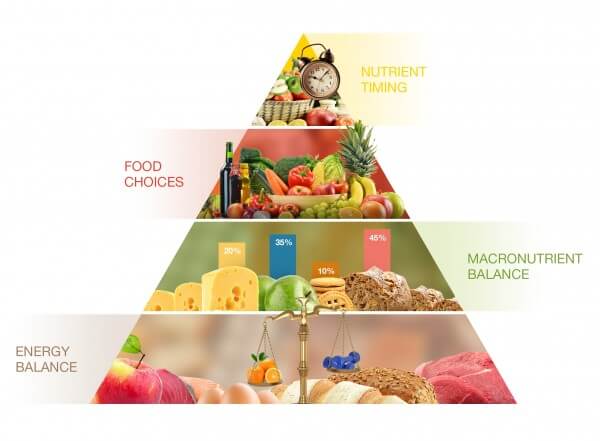
Let’s look at each of the layers in detail.
Meal Planning 101: Energy Balance
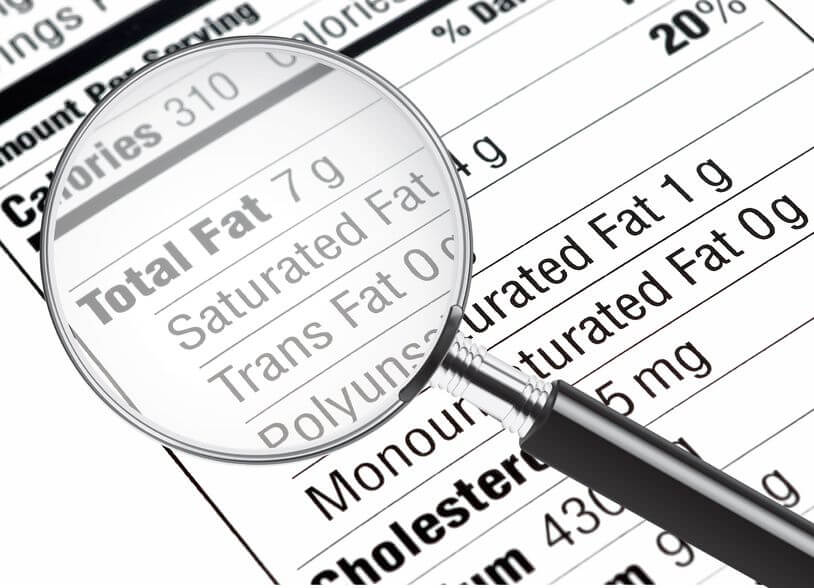
We’ve already touched on energy balance but it bears repeating because it dictates weight gain and loss more than anything else.
As you know, energy balance is the relationship between the energy contained in the food you eat and the energy burned through physical activity.
For meaningful weight loss or gain to occur, there must be an imbalance in the equation. That is, output must exceed input (calorie deficit = weight loss) or vice versa (calorie surplus = weight gain).
This isn’t theory, either. This is immutable, indisputable scientific fact.
- This is why every single controlled weight loss study conducted in the last 100 years…including countless meta-analyses and systematic reviews…have concluded that meaningful weight loss requires energy expenditure to exceed energy intake.
- This is why bodybuilders dating back just as far…from Sandow to Reeves and all the way up the line…have been using, and continue to use, this knowledge to systematically and routinely reduce and increase body fat levels.
- And this is why new brands of “calorie denying” come and go every year, failing to gain acceptance in the weight loss literature.
You just can’t escape gravity, death, taxes, and energy balance.
Meal Planning 102: Macronutrient Balance
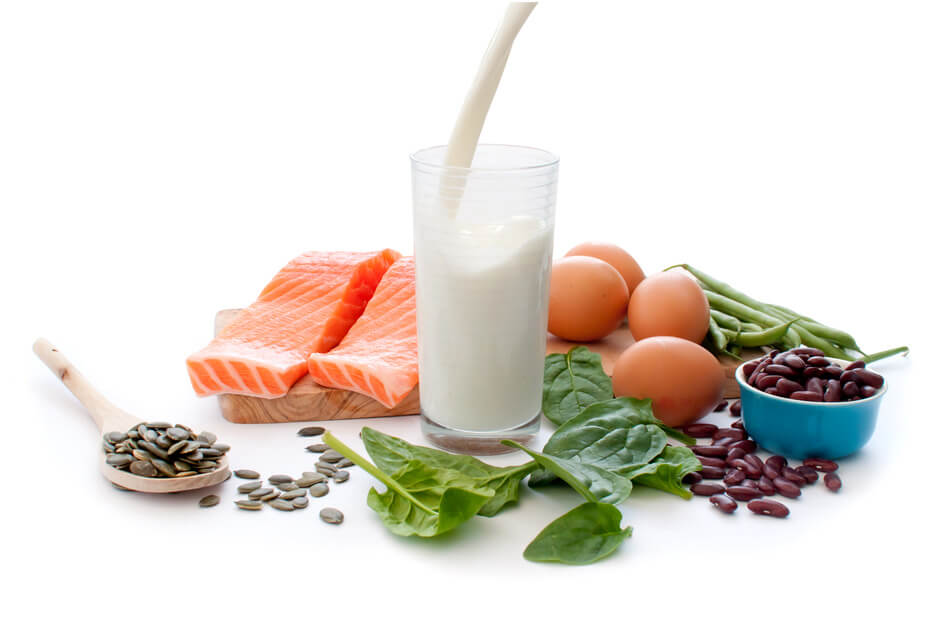
Once you grasp energy balance, the next part of effective meal planning is macronutrient balance.
A macronutrient is any of the nutritional components of the diet that are required in relatively large amounts: protein, carbohydrate, fat, and minerals such as calcium, zinc, iron, magnesium, and phosphorous.
When we look at food intake solely through the lens of energy balance and weight change, a calorie is a calorie. Eat too many and you gain weight. Restrict them and you lose weight.
There’s more to consider though.
We don’t want to manipulate weight so much as body fat percentage. That is, we want to lose fat and not muscle and gain muscle and not fat.
And when those are the goals, there’s more to consider than just calories.
- Eat too little protein and you’ll forever struggle to gain and preserve muscle.
- Eat too little carbohydrate and you’re going to have trouble building muscle and making progress in your workouts.
- Eat too much fat and you’re going to have to dramatically reduce protein and/or carbohydrate intake to compensate.
Get your macronutrient balance right, though, and everything just comes together.
You can gain muscle and lose fat with ease. You have high-energy workouts. You never have issues with hunger or cravings. It all becomes so easy. It’s the closest you’ll come to dietary magic.
Let’s move on to food choices, the tier worshipped by most mainstream diet “experts” as the be-all and end-all of dieting.
Meal Planning 103: Food Choices
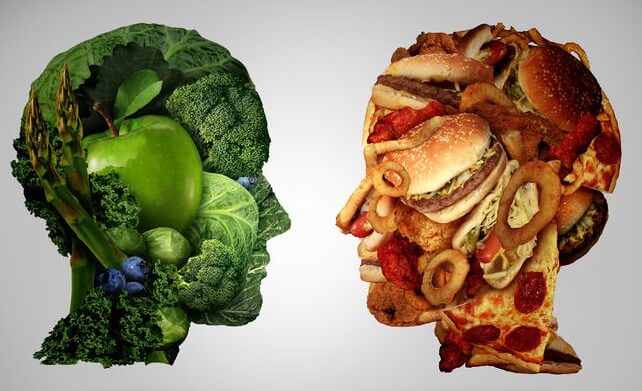
Quantitative aspects of dieting aren’t too popular these days.
People don’t want to bother planning or tracking numbers. They’d much rather follow simple rules about what they can and can’t eat, and there are plenty of marketers anxious to oblige them.
Well, as we discussed earlier in the “clean eating” myth, eating nutritious foods is important for overall health but forever lives in the shadows of energy and macronutrient balance.
The truth is you can be the cleanest eater in the world and still be weak and skinny fat.
As Professor Haub showed us earlier, and as the “If It Fits Your Macros” crowd won’t stop gloating about, you can build muscle and lose fat eating more or less whatever you want.
That said, certain foods make it easier or harder to lose and gain weight due to their volume, calorie density, and macronutrient breakdown.
Foods Good and Bad for Weight Loss and Gain
Generally speaking, foods that are “good” for weight loss are those that are relatively low in calories but high in volume (and thus satiating).
Examples of such foods are lean meats, whole grains, many fruits and vegetables, and low-fat dairy. These types of foods also provide an abundance of micronutrients, which is especially important when your calories are restricted (eat too much junk on a calorie-restricted diet and you can develop vitamin and mineral deficiencies).
Foods conducive to weight gain are the opposite: high in calories and low in volume and satiety.
These foods include the obvious like caloric beverages, candy, and other sugar-laden goodies, but quite a few “healthy” foods fall into this category as well: oils, bacon, butter, low-fiber fruits, and whole fat dairy products, for example.
Think of it this way: you can only “afford” so many calories every day, whether dieting to lose fat or gain muscle, and you have to watch how you “spend” them.
When dieting for fat loss, you want to spend the majority of your calories on foods that allow you to hit your daily macronutrient and micronutrient needs without “overdrafting” your energy balance “account.” (I know, I’m getting carried away with this financial metaphor but bear with me…)
When dieting for muscle growth, you have quite a few more calories to spend every day. This makes it easy to hit both your macronutrient and micronutrient targets with calories to spare, which you can then spend on, well, whatever you want.
Don’t mistake this section as me railing against eating healthy foods. I’m not a fan of the people trying to prove that you can “eat junk and get shredded”–long-term health matters more than getting super lean while eating boxes of Pop Tarts every week.
As a rule of thumb, if you get the majority (~80%) of your calories from relatively unprocessed, nutrient-dense foods, you can fill the remaining 20% with your favorite dietary sins and be healthy, muscular, and lean.
Meal Planning 104: Nutrient Timing
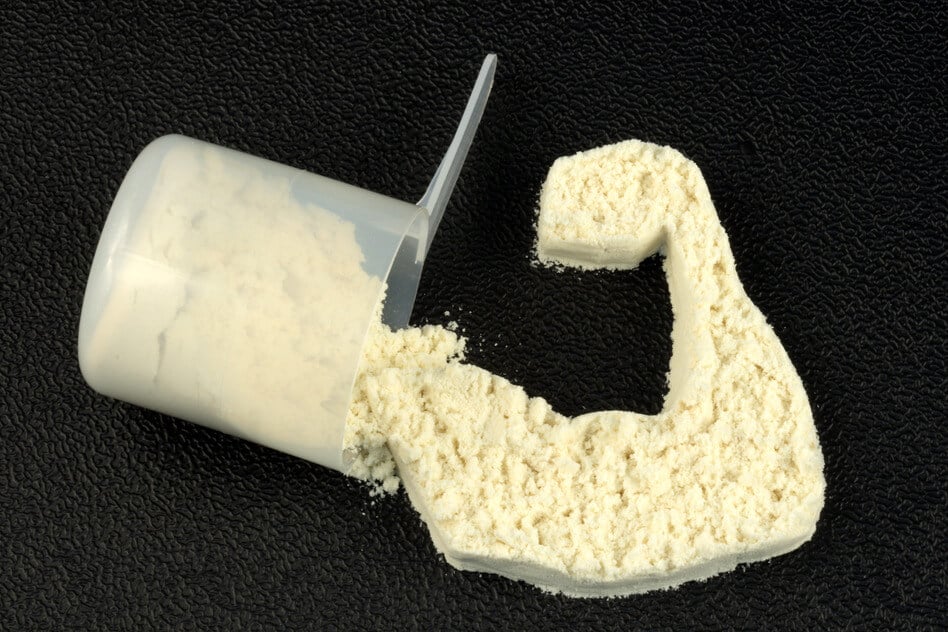
Generally speaking, when you eat your food doesn’t matter.
So long as you’re managing your energy and macronutrient balances properly, meal timing and frequency aren’t going to help or hinder your results.
You can eat three or seven meals per day. You can eat a huge breakfast or skip it and start eating at lunch. You can eat carbs whenever you like.
That said, if you’re serious about weightlifting, there are a few caveats:
- There’s a fair amount of evidence that eating protein before and after weightlifting workouts can help you build muscle and strength over longer periods of time.
- There’s a also evidence that post-workout carbohydrate intake, and high-carbohydrate intake in general, can help as well, mainly due to insulin’s anti-catabolic effects.
So, if you’re lifting weights regularly, I do recommend you have 30 to 40 grams of protein before and after your workouts.
30 to 50 grams of carbohydrate before a workout is great for boosting performance and 1 gram per kilogram of bodyweight is enough for post-workout needs.
How to Create Meal Plans for Losing Weight

Alright, now that you have the basic theory under your belt, let’s put some rubber on the road. And let’s start with how to create a meal plan for losing weight.
As you know, the key to losing fat is maintaining a calorie deficit over time. So the first step is working out how many calories you should be eating. Here’s how to do it:
Use the following calculator to determine how much energy your body burns every day.
Enter your email so we can send them to you.Want to save your results?
The resulting number will be a fairly accurate measurement of the total amount of energy your body is burning every day, generally known as your total daily energy expenditure or TDEE.
If you ate that amount of calories every day, your weight would remain more or less the same. Thus, to reduce your weight, you have to eat less, which brings me to point three.
In case you’re wondering how this works, it uses the Katch McArdle formula to determine your basal metabolic rate and then multiplies it based on your activity level.
And in case you’re wondering why the activity multipliers are slightly lower than the standard ones, it’s because the standard multipliers are simply too high. Unless you have an abnormally fast metabolism, your TDEE will come out high using the standard multipliers and you’ll wonder why you can’t lose weight.
Calculate your calorie deficit.
I recommend you a moderate calorie deficit of 20 to 25%. Anything larger can cause unwanted side effects associated with “starvation dieting.”
So what this means is you want to set your daily calorie intake to 75 to 80% of your TDEE.
For example, my average daily TDEE is about 3,000 calories, so when I want to lose weight, I set my intake to about 2,300 calories.
Determine your macronutrient targets.
Now that you have your calorie target worked out, it’s time to turn it into protein, carbohydrate, and fat targets.
Here’s how to do it:
Eat 1.2 grams of protein per pound of body weight.
If you’re very overweight (a man over 25% body fat or a woman over 30%), modify this to 1 gram per pound of lean body mass. Click here to learn how to determine LBM.
Eat 0.2 grams of fat per pound of body weight.
If you’re very overweight, modify this to 0.3 grams per pound of lean body mass.
Get the rest of your calories from carbohydrate.
It’s that simple. Here’s how it plays out for me:
Body Weight: 190 pounds
Calorie Intake: 2,300
230 grams of protein = 920 calories (1 gram of protein contains ~4 calories)
40 grams of fat = 360 calories (1 gram of fat contains ~9 calories)
255 grams of carbohydrate = 1020 calories (1 gram of carbohydrate also contains ~4 calories)
So, now that you have your numbers, it’s time to turn them into a meal plan that you will enjoy.
Make a list of foods you’d like to eat every day and head over to CalorieKing to learn their macronutrient profiles. Many people like to use Excel for this, listing the foods and their protein, carbohydrate, fat, and calorie numbers in side-by-side columns.
Now you need to start piecing together meals using those foods until you’re happy with the setup and your total daily intake is within 50 calories of your target.
Here are a few examples of weight loss meal plans we make for people over at Muscle for Life:
Once you’ve made your plan, you now stick to it every day. If, along the way, you get tired of a certain food or meal, simply replace it with something else you’d like to eat that fits your numbers.
It’s that simple!
How to Create Meal Plans for Building Muscle

When you want to lose fat, you eat less than your TDEE. When you want to maximize muscle growth, you eat a bit more.
I explain why in this article, which I highly recommend you read, but what it boils down to is this:
When you want to maximize muscle growth, you should eat about 10% more than your average TDEE. This slight calorie surplus allows your body to grow as efficiently as possible.
The macronutrient breakdown for “bulking” is different as well:
- Eat 1 gram protein per pound of body weight.
- Eat 0.3 grams of fat per pound of body weight.
- Get the rest of your calories from carbohydrate.
So for me:
190 grams of protein = 760 calories
60 grams of fat = 540 calories
500 grams of carbohydrate = 2,000 calories
And yes, eating that much carbohydrate helps me lift a lot of weight in the gym. 🙂
The Best Meal Planning Apps
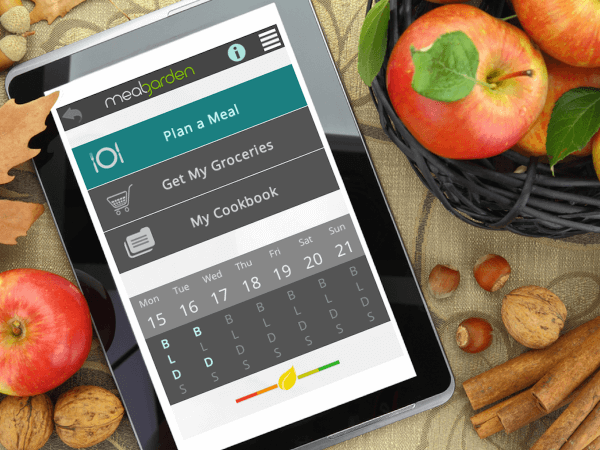
If creating food menus and meeting different nutritional targets sounds daunting to you, don’t worry, it’s pretty simple once you dig into it. Practice makes perfect and all that.
Here are several apps that can help.
MyFitnessPal
MyFitnessPal is a free iOs/Android/Web app that allows you to to easily track your intake.
Make sure you set your own custom calorie and macronutrient goals–don’t go with their default recommendations.
Paprika
Paprika is an robust and elegant app that helps you organize your recipes, make meal plans, and create grocery lists.
Pepperplate
Pepperplate is similar to Paprika. It’s a little less slick and user-friendly but it’s free.
MyMacros+
MyMacros+ is a simple food tracking app made specifically for us fitness folk. As you’d guess, it allows you to plan and track your macronutrient intake.
The Bottom Line on Meal Planning
You don’t have to necessarily plan or track your food intake to lose fat or build muscle, but if you want guaranteed results and want them as quickly as possible, then meal planning is the way to go.
A good meal plan takes all the guesswork out of dieting and ensures you don’t under- or overeat and that your diet meets both your macro- and micronutritional needs.
No matter what type of diet you’re following, meal planning can work for you. And this article is all you need to get results.
What’s your take on meal planning? Have anything else to share? Let me know in the comments below!
Scientific References +
- Schwartz RS, Ravussin E, Massari M, O’Connell M, Robbins DC. The thermic effect of carbohydrate versus fat feeding in man. Metabolism. 1985;34(3):285-293. doi:10.1016/0026-0495(85)90014-9
- Astrup A. Dietary approaches to reducing body weight. Baillieres Best Pract Res Clin Endocrinol Metab. 1999;13(1):109-120. http://www.ncbi.nlm.nih.gov/pubmed/10932679. Accessed September 25, 2019.
- Naude CE, Schoonees A, Senekal M, Young T, Garner P, Volmink J. Low carbohydrate versus isoenergetic balanced diets for reducing weight and cardiovascular risk: A systematic review and meta-analysis. PLoS One. 2014;9(7). doi:10.1371/journal.pone.0100652
- Sacks FM, Bray GA, Carey VJ, et al. The new England journal of medicine: Comparison of weight-loss diets with different compositions of fat, protein, and carbohydrates. N Engl J Med. 2009;360(9):859-873. doi:10.1056/NEJMoa0804748
- Johnston CS, Tjonn SL, Swan PD, White A, Hutchins H, Sears B. Ketogenic low-carbohydrate diets have no metabolic advantage over nonketogenic low-carbohydrate diets. Am J Clin Nutr. 2006;83(5):1055-1061. doi:10.1093/ajcn/83.5.1055
- Thomson CA, Stopeck AT, Bea JW, et al. Changes in body weight and metabolic indexes in overweight breast cancer survivors enrolled in a randomized trial of low-fat vs. reduced carbohydrate diets. Nutr Cancer. 2010;62(8):1142-1152. doi:10.1080/01635581.2010.513803
- Sacks FM, Bray GA, Carey VJ, et al. Comparison of weight-loss diets with different compositions of fat, protein, and carbohydrates. N Engl J Med. 2009;360(9):859-873. doi:10.1056/NEJMoa0804748
- Phillips SA, Jurva JW, Syed AQ, et al. Benefit of low-fat over low-carbohydrate diet on endothelial health in obesity. Hypertens (Dallas, Tex 1979). 2008;51(2):376-382. doi:10.1161/HYPERTENSIONAHA.107.101824
- Samaha FF, Iqbal N, Seshadri P, et al. A low-carbohydrate as compared with a low-fat diet in severe obesity. N Engl J Med. 2003;348(21):2074-2081. doi:10.1056/NEJMoa022637
- Volek JS, Sharman MJ, Gómez AL, et al. Comparison of energy-restricted very low-carbohydrate and low-fat diets on weight loss and body composition in overweight men and women. Nutr Metab. 2004;1. doi:10.1186/1743-7075-1-13
- Yancy WS, Olsen MK, Guyton JR, Bakst RP, Westman EC. A low-carbohydrate, ketogenic diet versus a low-fat diet to treat obesity and hyperlipidemia: a randomized, controlled trial. Ann Intern Med. 2004;140(10):769-777. doi:10.7326/0003-4819-140-10-200405180-00006
- Hand GA, Shook RP, Paluch AE, et al. The energy balance study: the design and baseline results for a longitudinal study of energy balance. Res Q Exerc Sport. 2013;84(3):275-286. doi:10.1080/02701367.2013.816224
- Energy Balance and Obesity, Healthy Weight Basics, NHLBI, NIH. https://www.nhlbi.nih.gov/health/educational/wecan/healthy-weight-basics/balance.htm. Accessed September 25, 2019.
- Wang X, Ouyang Y, Liu J, et al. Fruit and vegetable consumption and mortality from all causes, cardiovascular disease, and cancer: systematic review and dose-response meta-analysis of prospective cohort studies. BMJ. 2014;349:g4490. doi:10.1136/bmj.g4490
